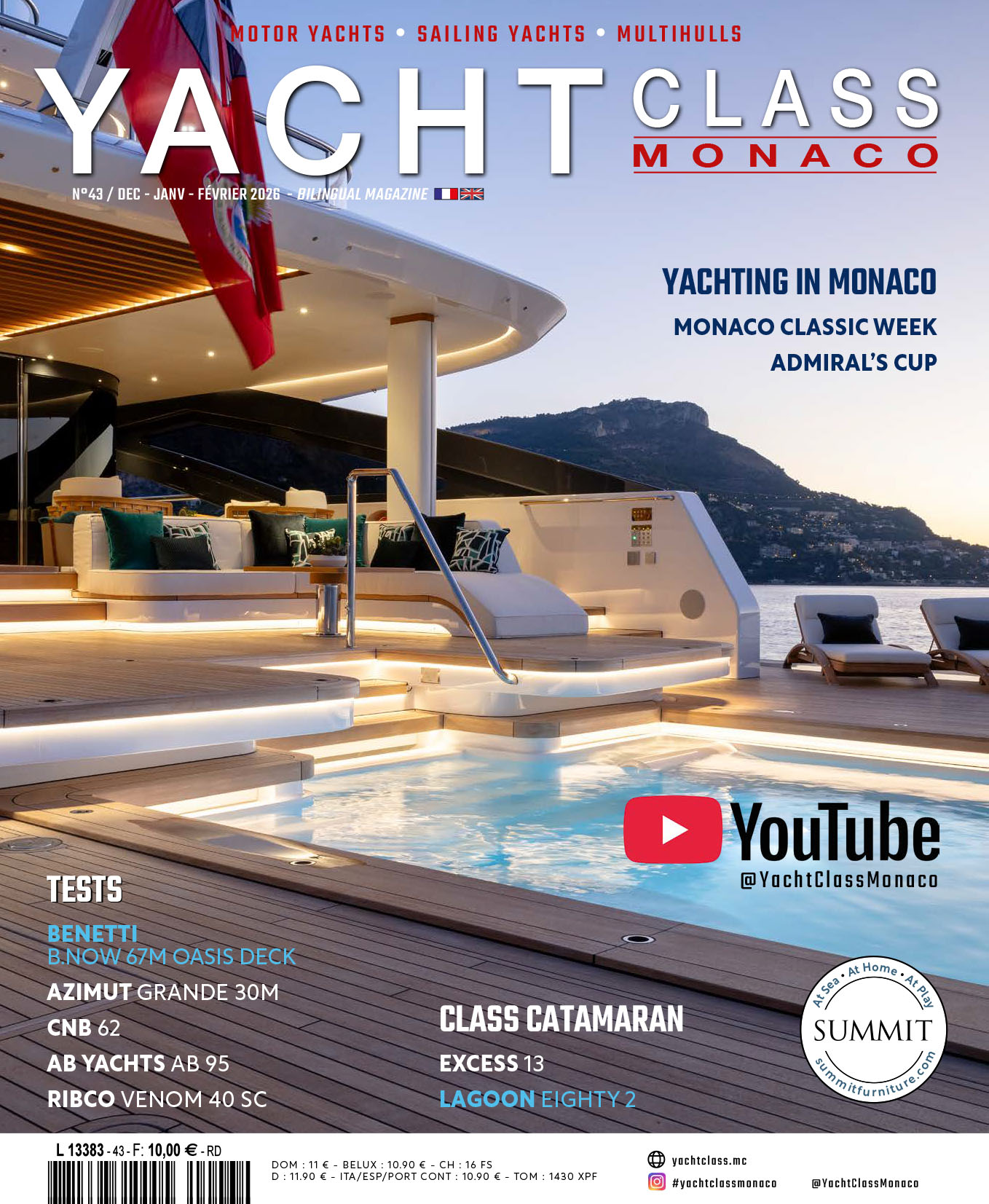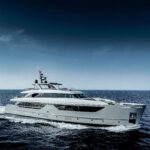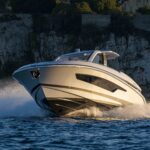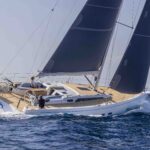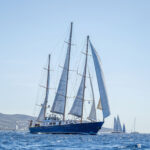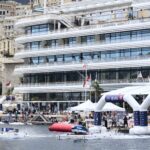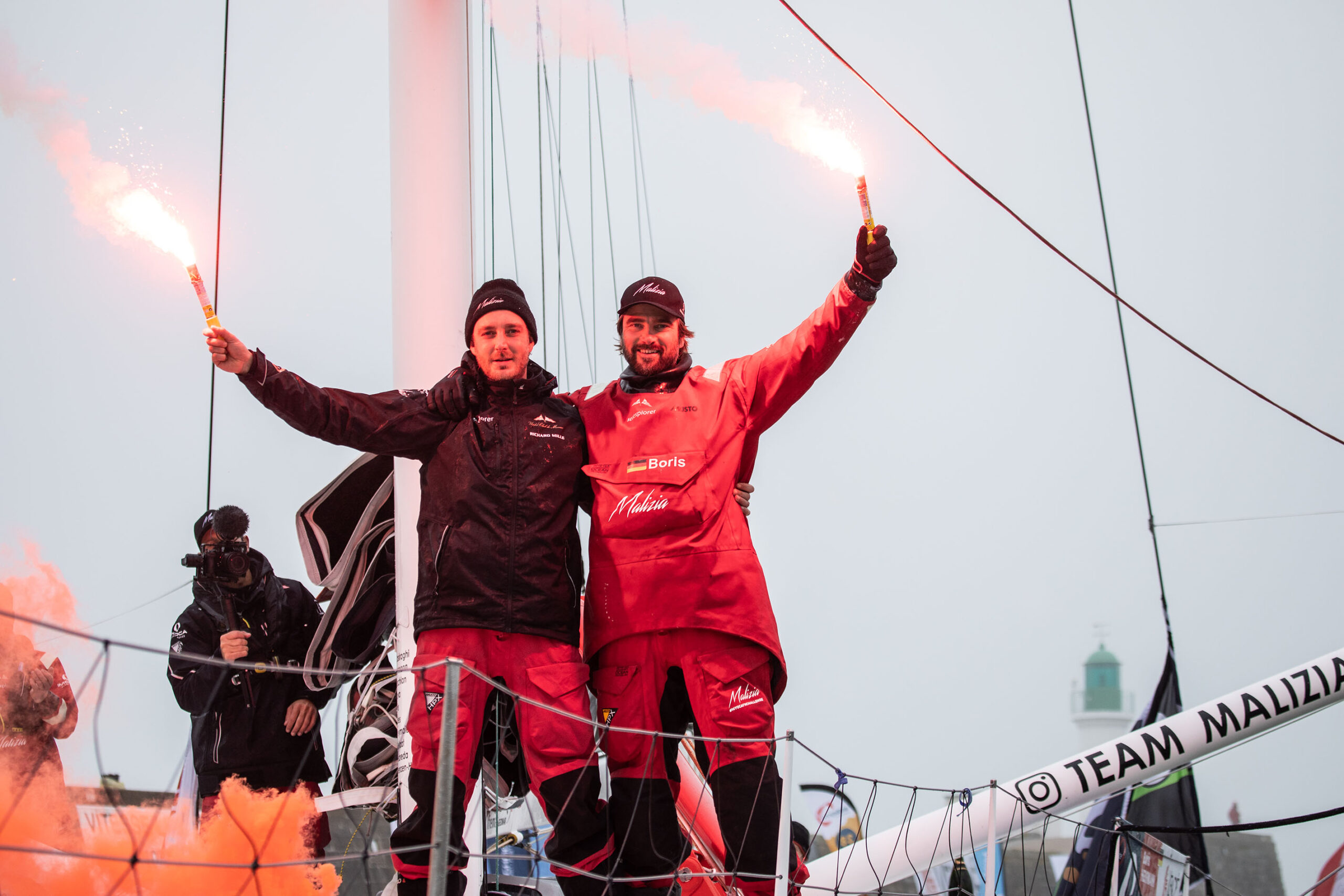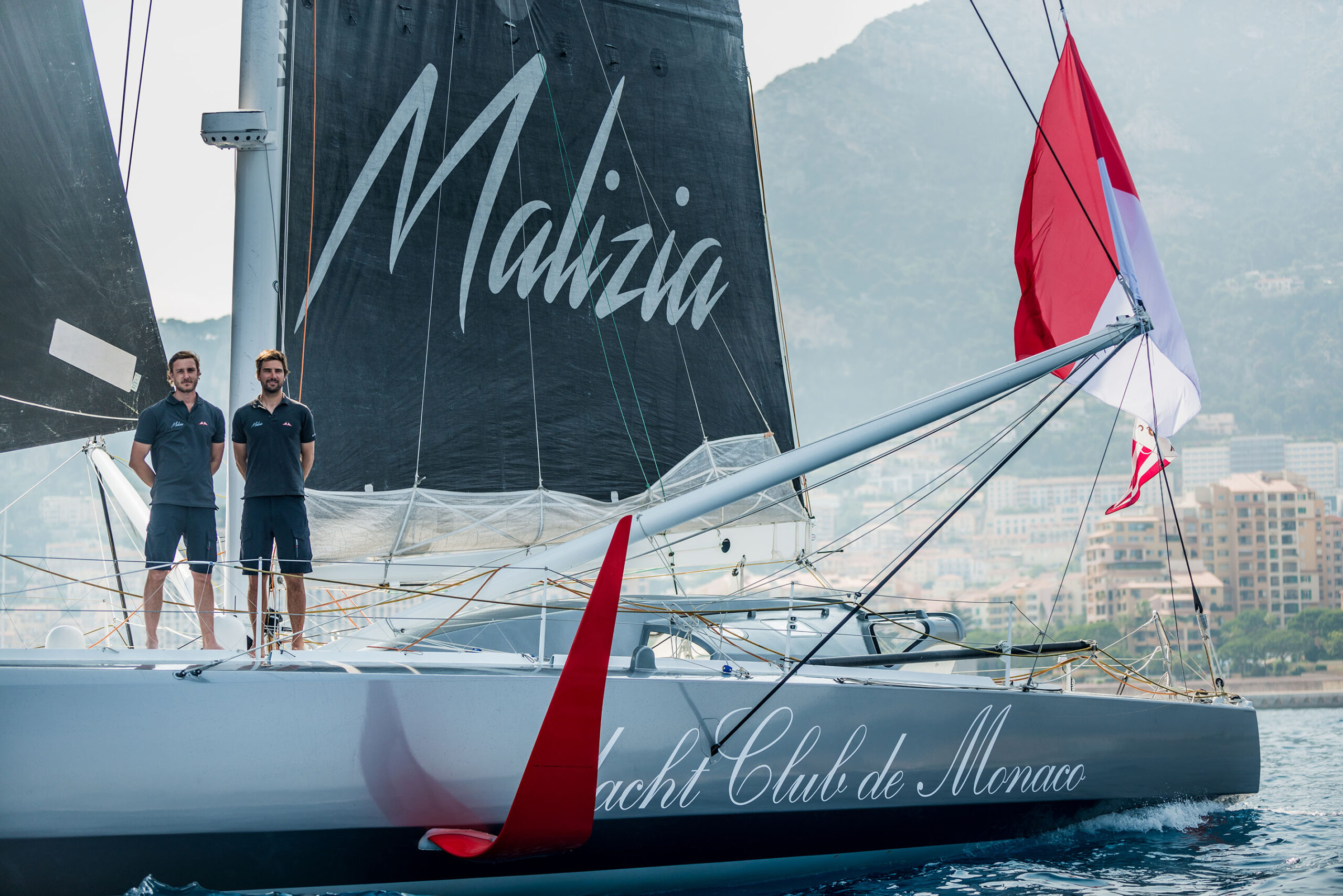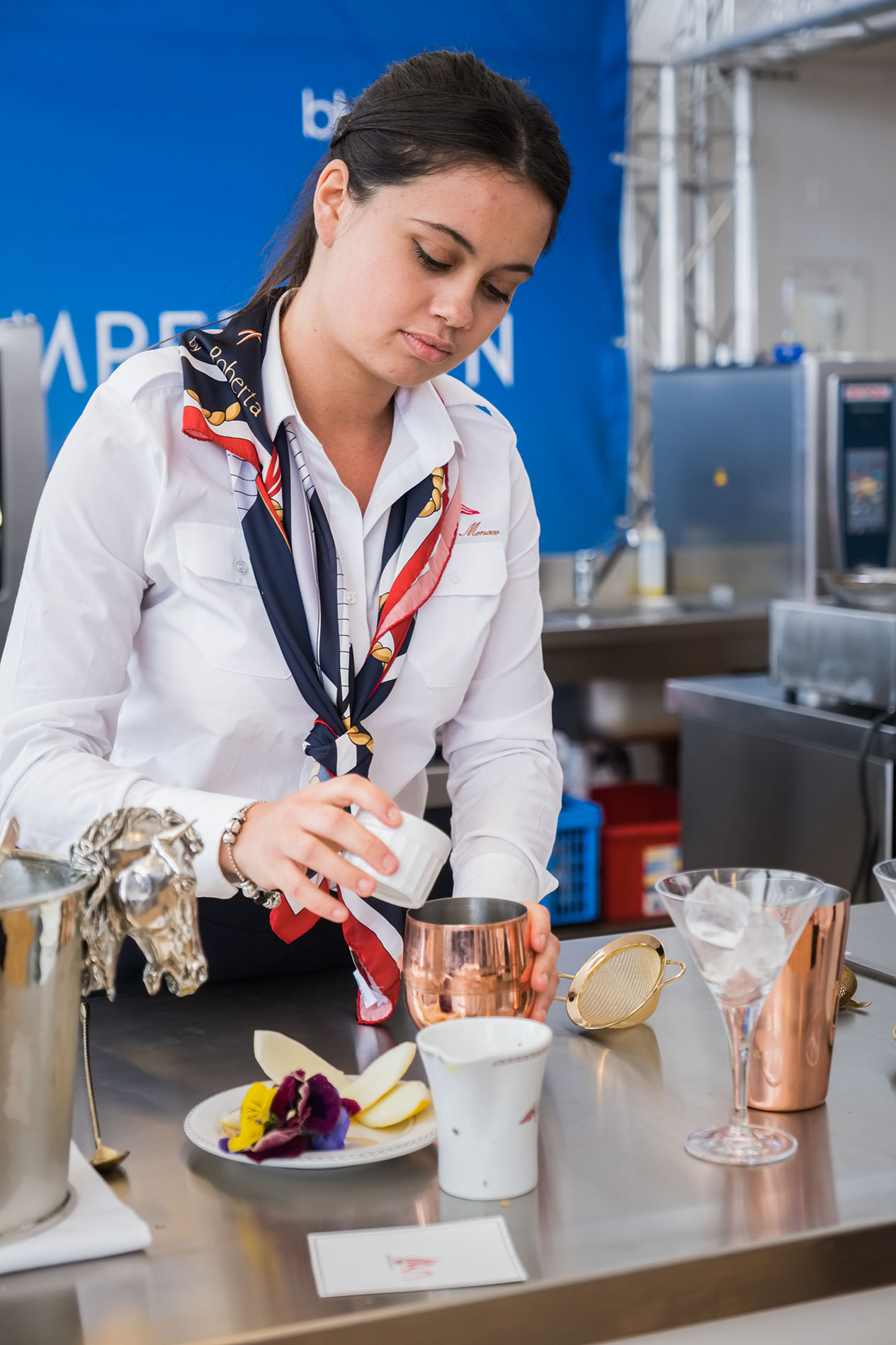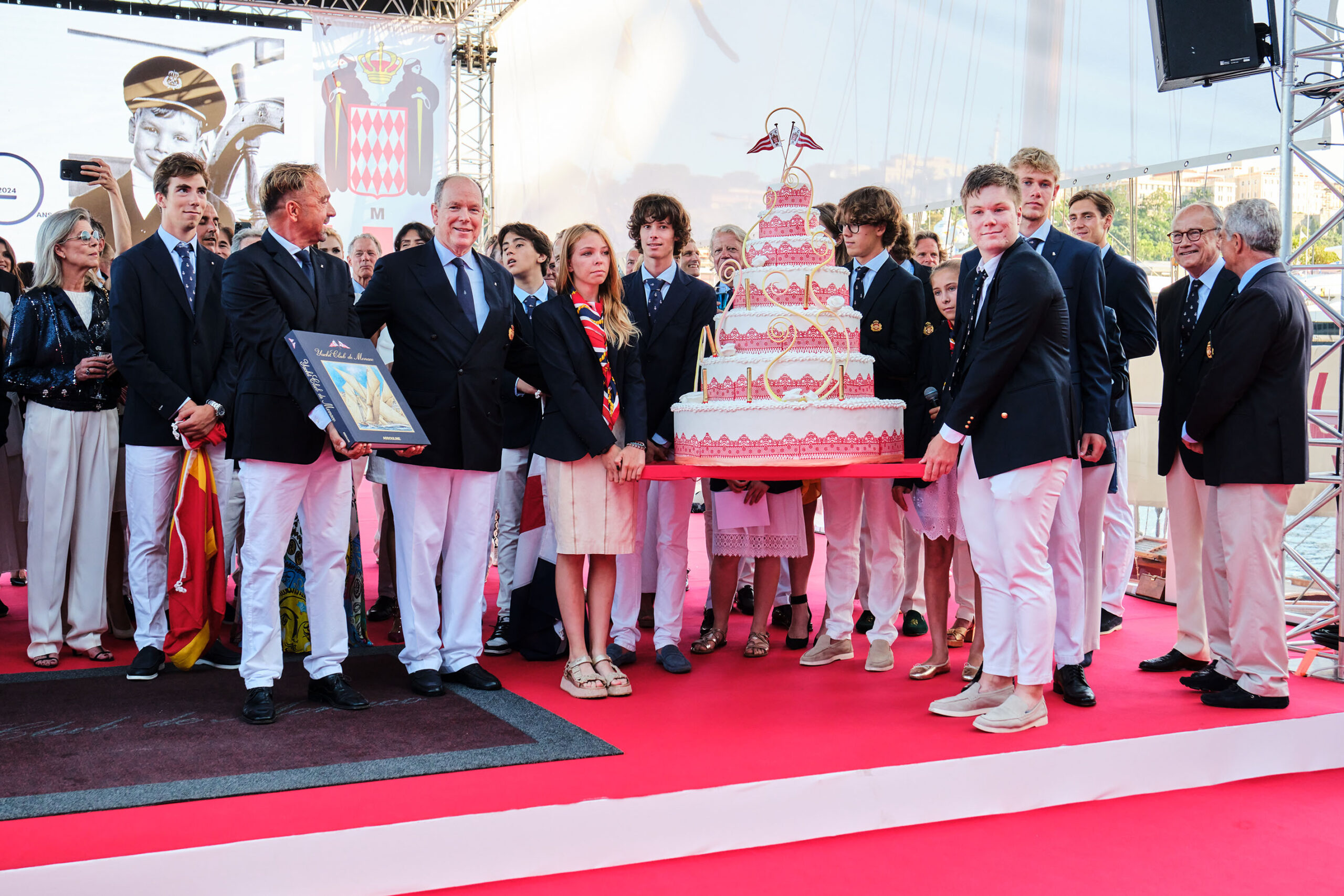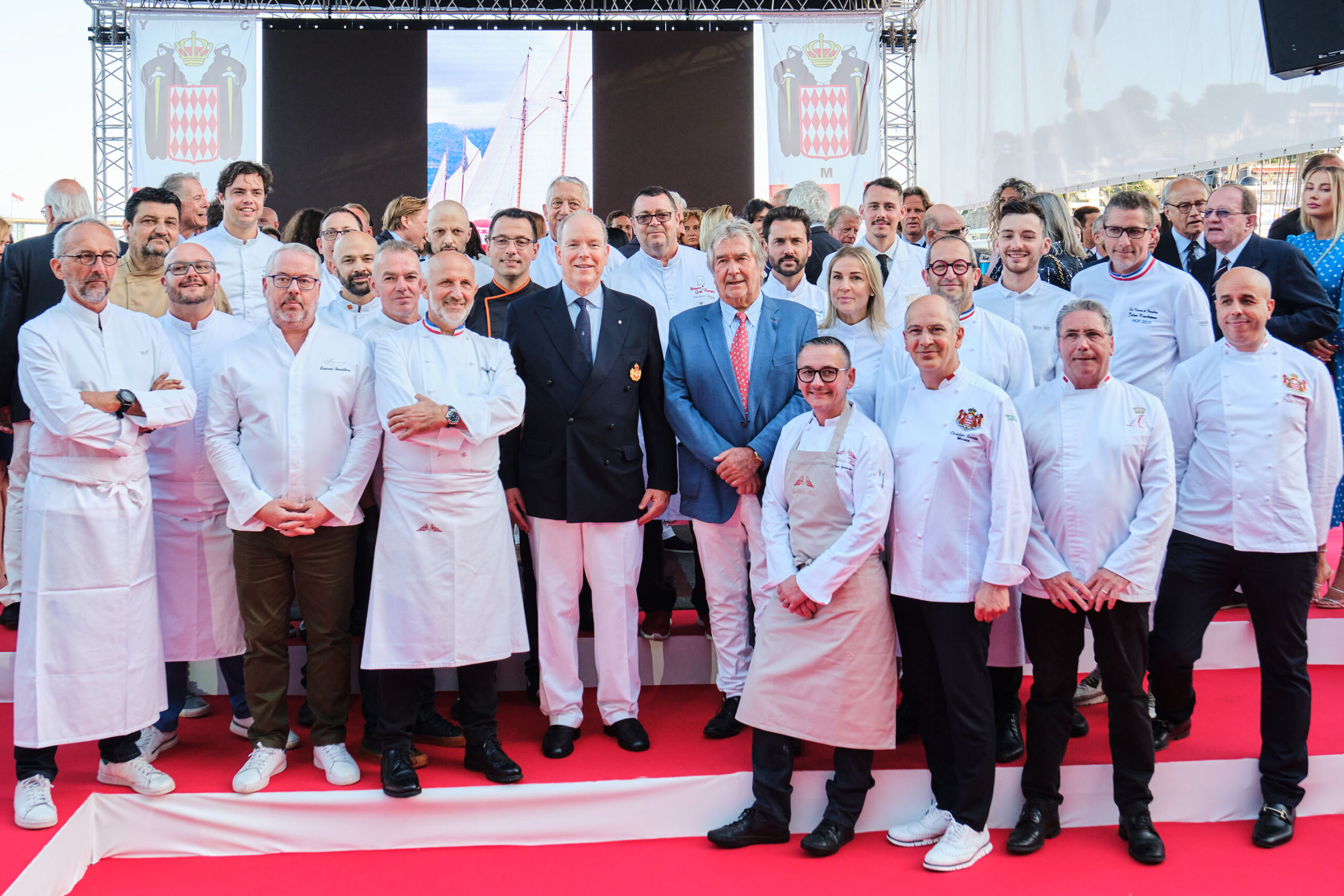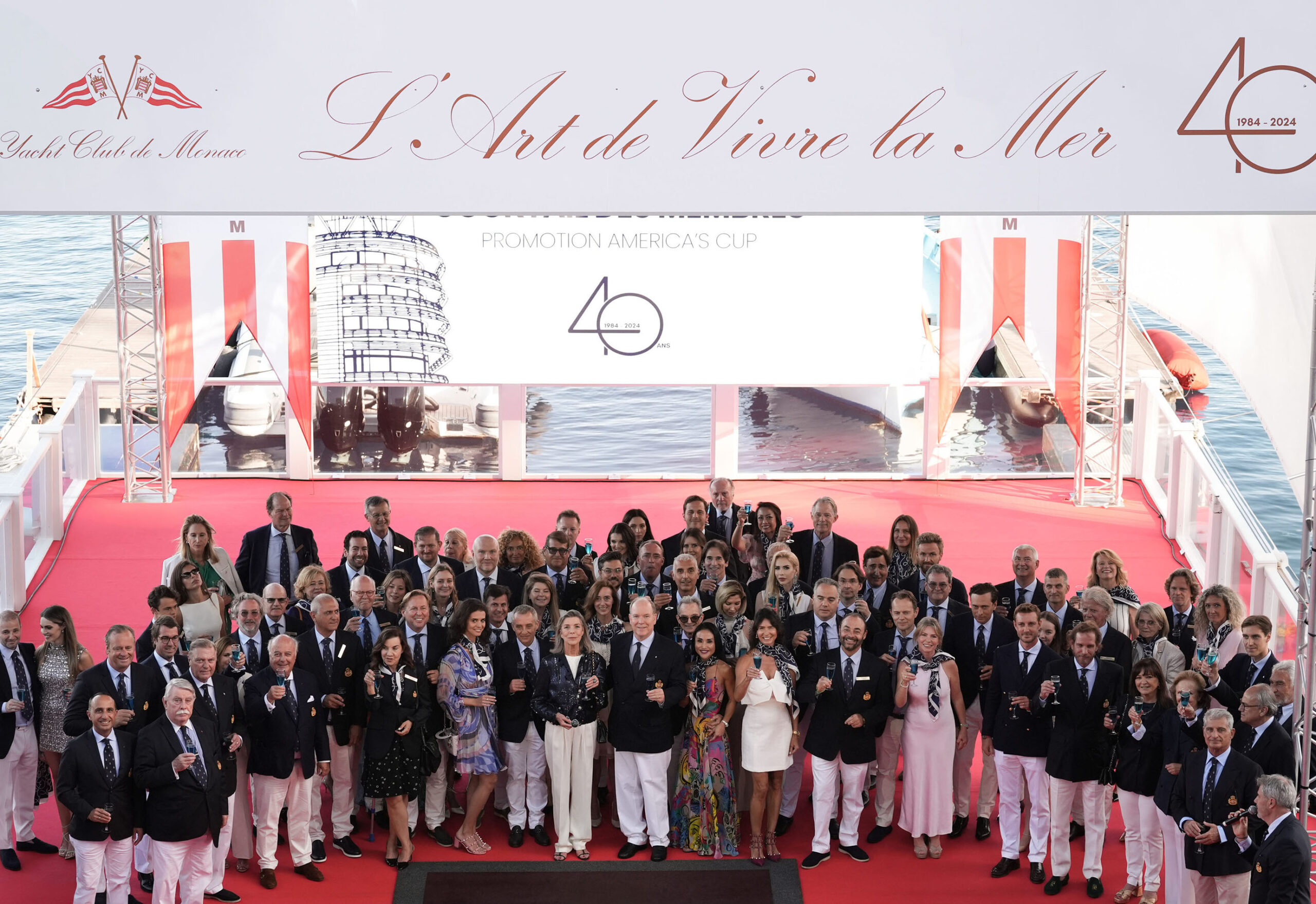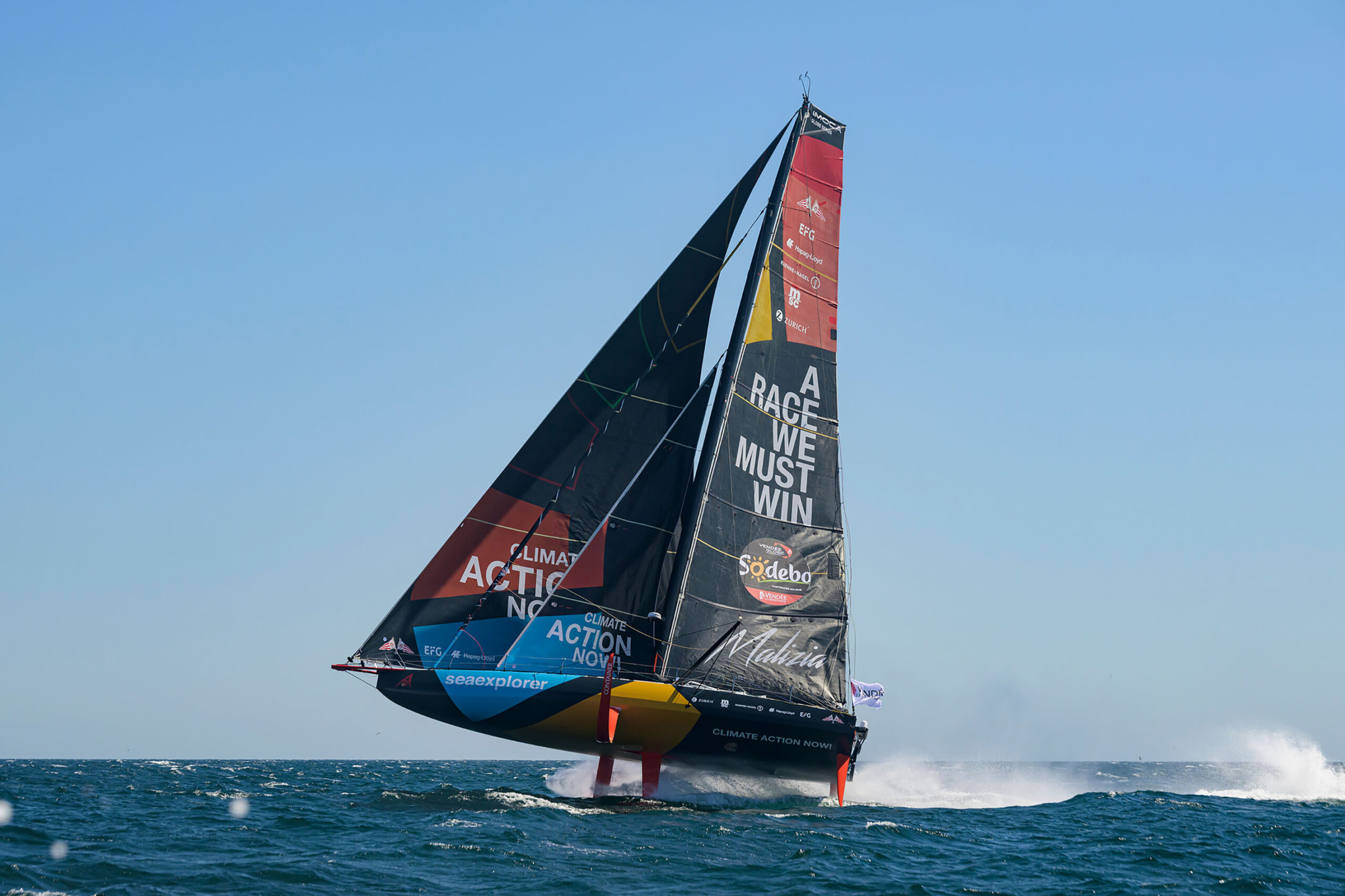YACHT CLASS n°38 (sept-oct-nov 2024)
Yacht Club de Monaco
The Yacht Club de Monaco brought the Quai Louis-II to life on 17th June. As well as celebrating 40 years as President of Prince Albert II, the summer cocktail party celebrated the 10th anniversary of the inauguration of the club-house. These new premises have revolutionised yachting in Monaco.
Texte : Gael Lanoue – Photos : Carlo Borlenghi, Martin Keruzoré / Team Malizia, Mesi / YCM, Olivier Blanchet / Alea, Gaetan Luci / Palais Princier et DR.
It’s a long ship, over 200 metres long, moored at Quai Louis-II, in the Port Hercule. It looks like a ship, but it’s not. It does not travel the world, the world comes to it. Since its inauguration 10 years ago, the club-house has been home to the Principality’s two historic sailing clubs: the Société Nautique de Monaco, dedicated to rowing, and the Yacht Club de Monaco (YCM). So to celebrate this anniversary, they had to pull out all the stops. The YCM’s traditional summer cocktail party paid tribute to this exceptional new headquarters, which has contributed so much to its reputation. Firstly, thanks to the international renown of its architect, Lord Norman Foster. The 89-year-old Briton has designed more than 200 buildings around the world, including the Reichstag Palace in Berlin and Apple Park in California, the headquarters of the company of the same name. He has collected more than 650 awards, including the 1999 Pritzker Prize, the supreme distinction in architecture. The clubhouse, an architectural masterpiece, is also a jewel of technology at the service of the environment. The current operation of the building follows High Environmental Quality (HEQ) certified standards: energy management, hygrometric, acoustic and visual comfort, water quality, etc. As its designer, Norman Foster, reminded us at the inauguration: “The principles of sustainable construction are part of everything we do. Our office was one of the first pioneers of green architecture in the 1970s”. One example of this expertise is the air-conditioning system using seawater, drawn from a depth of 40 metres. But above all, this sumptuous setting has enabled the YCM to enter a new dimension. Between sporting ambition, ecological commitment and international influence.
Entering a new era
The inauguration of these new premises was a turning point in the already long existence of the YCM, founded in 1953. It also marked the start of a revolution on the competition front. The club continues to host major sporting events, whose reputation in the world of yachting grows from year to year. Some of the races are already must-see events of the season. Just one example: the Monaco Energy Boat Challenge, a major event focusing on the sustainability of materials and technologies used in propulsion. At each edition since its creation in 2014, new innovations stand out for their greater respect for the environment, while maintaining the same level of nautical performance. Participants are at the cutting edge of the use of solar energy, hydrogen, electricity or other renewable energy sources, and come from all over the world. For the 11th edition, from 1 to 6 July (see p. 186), 46 teams from 40 universities and 25 nations took up the challenge. The event is now so popular that the Prince Albert II Foundation has set up a special prize to reward the best technology in terms of energy efficiency and carbon reduction. Finally, the YCM’s two flagship ships, Tuiga and Malizia, continue to sail the seas of the world and embody the Principality’s excellence. The former is a shining example of the classic yachting tradition, with a charm that goes back more than a century; the latter regularly wins ocean races in the IMOCA category, or sets records. After two 2nd place finishes in the Transat CIC and the New York Vendée – Les Sables-d’Olonne, Boris Herrmann will be back at the helm for the start of the Vendée Globe on 10th November.
“Monaco without regattas, isn’t it Paris without the Opera?”
But competition that respects the environment cannot be improvised. If the guiding principles of the Yacht Club de Monaco are to live on for many years to come, they need to be passed on and even taught within dedicated structures. This is another major benefit of the new premises. Thanks to its new dimension, the YCM has been able to continue developing its “La Belle Classe” (LBC) label, with the creation, in 2018, of “LBC Explorer”, which concerns professional shipowners, captains or explorers who bear witness to the little-known maritime areas they travel. All of the association’s activities (of which there are currently five) promote what its members define as the values of yachting: safeguarding sailing heritage, protecting nature, preserving naval etiquette and promoting innovative technologies. As an extension of these values, the YCM opened its own training centre, the LBC Academy, in 2015. Its courses promote excellence in all aspects of the yachting industry. Combined with the Cluster Yachting Monaco, also launched in 2014 by Secretary General Bernard d’Alessandri, these projects have made the Principality the international capital of yachting. But isn’t that ultimately its vocation? Let’s not forget the question posed in the Journal de Monaco on 30th March 1862: “Monaco without regattas, isn’t it Paris without the Opera?”
The YCM, a major asset for Monaco‘s influence
On 17th June, the summer cocktail celebrated the 40th anniversary of Prince Albert II’s presidency, but also this golden decade initiated by these new premises. The Sovereign Prince recalls: “In 2014, at the inauguration, I shared with you the ambition to make Monaco the benchmark for world yachting”. As you can see, the guiding spirit has remained faithful to that called for by Prince Rainier III, founder of the YCM, when he maintained that “Monaco’s future lies in the sea”. Was this a sincere statement or a gamble on the future? One thing is certain: the “builder prince” was right. According to the Cluster, the boating industry brings in 750 million euros a year for the Monegasque government. The Yacht Club de Monaco, by becoming a link between all those involved in yachting throughout the world, by developing this sector as never before, “is now recognised as a major player in the promotion of our Principality, contributing to its international appeal and in accordance with its statutes”, Prince Albert II is delighted to say.
